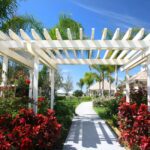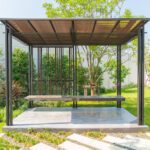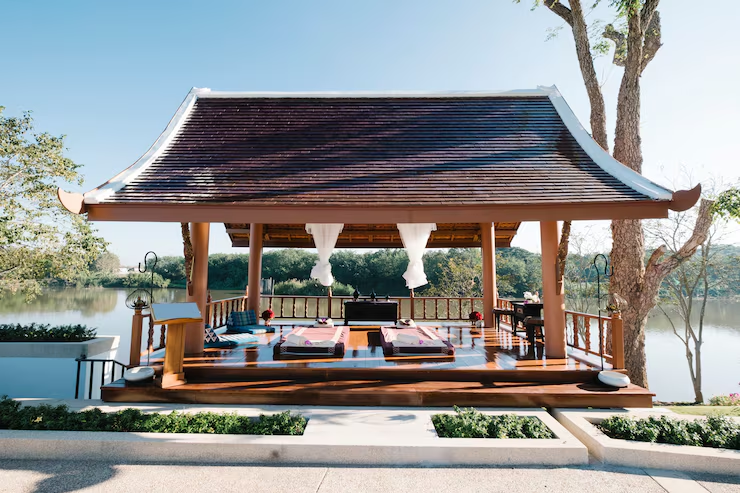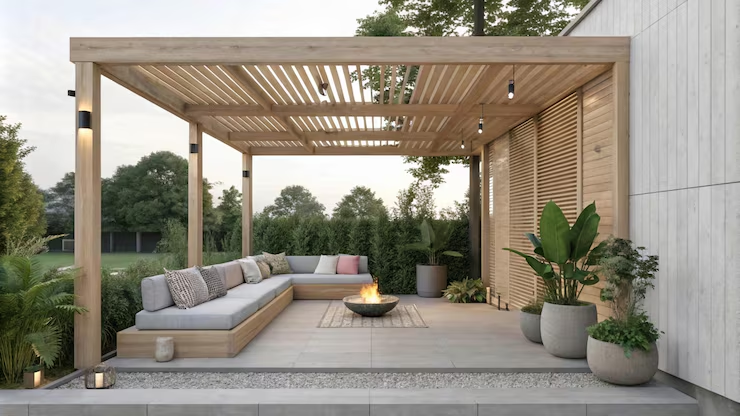Retail storefronts need to stand out while offering comfort and protection—and commercial awnings check both boxes. With Connecticut’s unpredictable weather, durable awnings help shield entrances from sun, rain, and snow while keeping window displays visible and inviting. The right awning can also lower indoor cooling costs and extend a brand’s identity to the sidewalk, making it more than just a shade solution.
Here are five key things to consider when choosing the best durable commercial awnings for retail stores in Connecticut.
Table of Contents
1. Prioritize Strong, Long-Lasting Materials
2. Choose a Style That Matches the Business and Foot Traffic
3. Think About Weather Resistance and Seasonal Durability
4. Invest in Professional Installation and Support
5. Maximize Visibility and Brand Presence
How to Budget for a Commercial Awning Without Cutting Corners
Choosing the Right Awning Size for Storefront Coverage
Maintaining Commercial Awnings Year-Round
Frequently Asked Questions (FAQs)
Make a Bold First Impression with Durkin’s Awnings
Key Takeaways
| ✔ Durable commercial awnings protect storefronts from weather and boost curb appeal. ✔ Choosing the right materials ensures long-lasting performance and lower maintenance costs. ✔ Awning style should match the brand while accommodating foot traffic and layout. ✔ Sizing matters—proper width, projection, and placement improve function and visibility. ✔ Regular maintenance keeps awnings looking sharp and working safely year-round. ✔ Smart budgeting focuses on quality materials and long-term value, not just price. ✔ Connecticut awning experts like Durkin’s offer local insight, custom designs, and code-compliant installs. |
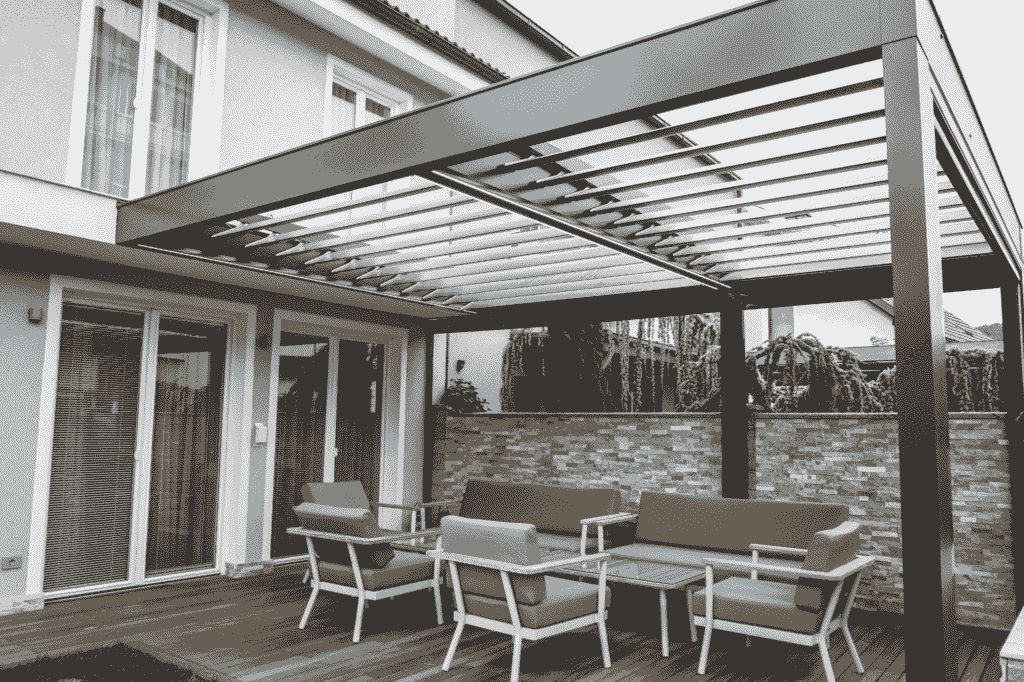
1. Prioritize Strong, Long-Lasting Materials
Commercial awnings take a beating from the elements, so the materials used must stand up to wind, rain, sun, and snow. Retail businesses should look beyond appearance and focus on construction quality, especially in places with harsh seasonal changes. Choosing the right materials early helps avoid constant repairs or premature replacements.
How Durable Materials Protect Investments
- Powder-Coated Aluminum Frames: Powder coating creates a protective finish that resists rust, corrosion, and peeling. Aluminum also keeps the frame lightweight without sacrificing strength, which makes installation easier and long-term use more reliable.
- High-Performance Fabric Covers: Woven acrylic and vinyl-laminated polyester are top choices for commercial awnings because they resist fading, mildew, and tearing. These fabrics are designed for outdoor use and maintain color and structure even with daily sun exposure or sudden temperature drops.
- Reinforced Seams and Stitching: Seam failure is a common reason awnings wear out early, especially in windy or wet conditions. Heavy-duty thread and double-stitched seams prevent unraveling and maintain fabric tension over time.
2. Choose a Style That Matches the Business and Foot Traffic
Awnings do more than provide shade—they shape how a storefront looks and functions. From clean, modern designs to classic canopies, the style should reflect the brand and accommodate real-world use. The right shape and structure can guide customers inside while protecting them from the elements.
Why Style and Function Matter for Retail Success
- Open-Sided Designs for Walkways: Open-sided awnings allow shoppers to move freely beneath the cover, making them ideal for storefronts in pedestrian-heavy areas. They invite foot traffic while keeping walkways dry and shaded.
- Drop-Arm Retractable Options for Windows: Drop-arm styles offer sleek coverage for display windows while allowing light control throughout the day. Connecticut awning experts often suggest this for stores that want flexible protection without blocking visibility.
- Sloped or Concave Shapes for Branding: Sloped awnings create a clean, modern profile, while concave shapes add elegance and dimension. Both styles offer ideal surfaces for logos and business names, helping the storefront stand out from a distance.
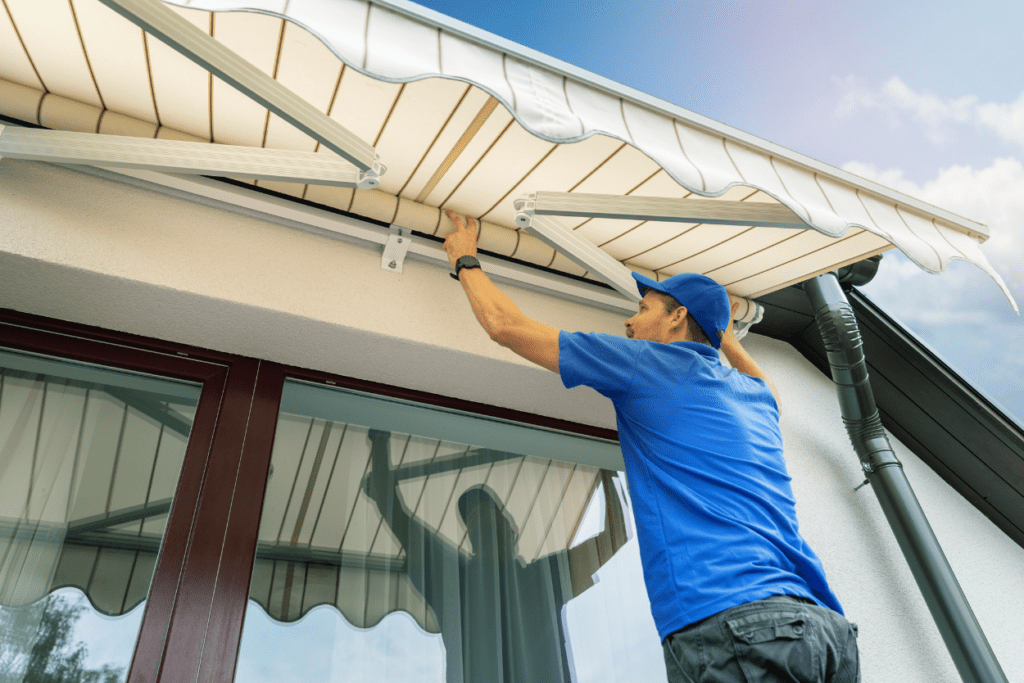
3. Think About Weather Resistance and Seasonal Durability
Connecticut weather can shift quickly—from blazing sun to coastal storms or heavy snowfall. Durable commercial awnings must be ready for all seasons without sagging, fading, or tearing. Weather resistance isn’t just a bonus—it’s a requirement for long-term performance.
How the Right Features Handle Connecticut Conditions
- Wind-Rated Structures: Many awnings come with wind ratings based on frame strength and fabric tension. Retailers should look for options that can handle gusts common in open commercial zones or main street storefronts.
- Water-Repellent and Mildew-Resistant Fabric: Water-resistant coatings help prevent soaking and mildew buildup, which can quickly ruin the look of an awning. Fabrics like vinyl-coated polyester are ideal for year-round protection and easy cleaning.
- Snow-Shedding Designs: Awnings with proper slope and reinforced support shed snow instead of collecting it. Connecticut awning experts recommend these designs to prevent collapse or strain during harsh winters.
4. Invest in Professional Installation and Support
Even the strongest awning won’t hold up without proper installation. A professional team ensures the structure is secure, level, and aligned with local code requirements. For retail spaces, that support can make the difference between a one-season fix and a long-term investment.
Why Expert Installation Is Worth the Investment
- Precision Measurement and Mounting: Professionals take precise measurements to match the awning to the building’s layout. This ensures it fits tightly, aligns with windows or entrances, and doesn’t interfere with signage or doors.
- Local Code Compliance: Commercial awnings often require permits or adherence to city regulations. Connecticut awning experts understand local codes and can handle permitting to avoid delays or fines.
- Ongoing Maintenance and Repairs: Many companies offer service plans to keep awnings clean, tight, and functional. Scheduled inspections help spot small issues—like loose bolts or fraying edges—before they become costly repairs.
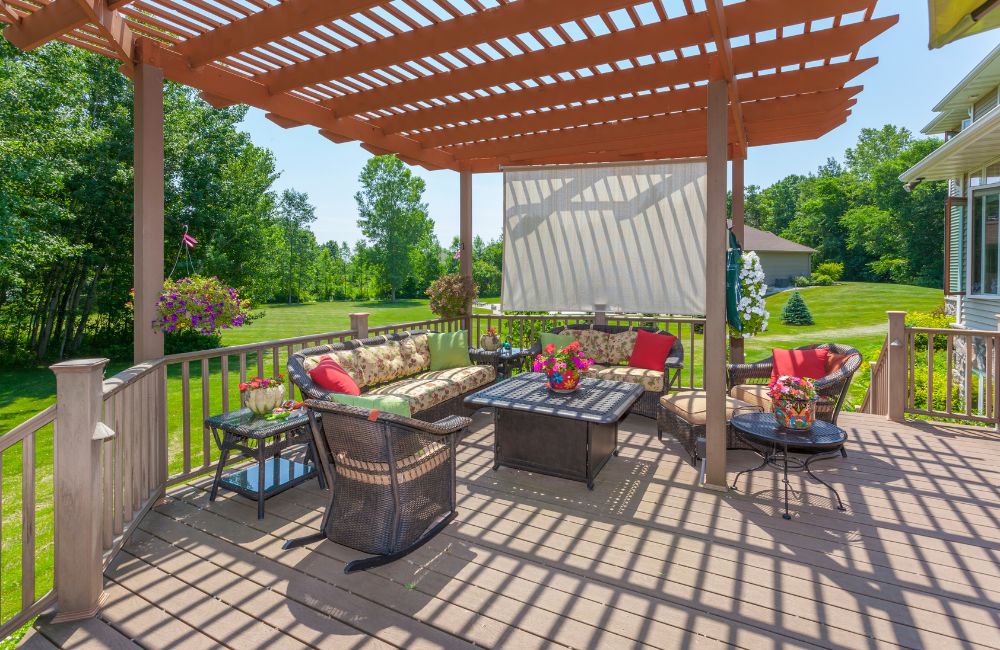
5. Maximize Visibility and Brand Presence
An awning isn’t just a cover—it’s a powerful branding tool. The right design turns a basic storefront into a recognizable landmark, especially when paired with thoughtful graphics and colors. Visibility leads to walk-in traffic, which directly impacts retail sales.
How Awnings Strengthen Business Identity
- Custom Logos and Graphics: Commercial-grade fabrics can be printed with full-color logos, business names, and even taglines. Connecticut awning experts often help businesses match awning designs with existing signage for seamless branding.
- Lighting Integration: Some awnings are built to accommodate lighting underneath or around the perimeter. Adding LED strip lights or mounted fixtures keeps the business visible at night and during low-light seasons.
- Color and Fabric Coordination: Choosing colors that match the storefront or brand palette enhances curb appeal. Bold, contrasting tones attract attention, while subtle hues create an upscale feel that matches luxury or boutique spaces.
How to Budget for a Commercial Awning Without Cutting Corners
A well-made commercial awning is an investment that pays off in visibility, protection, and energy savings. Fortunately, it’s possible to plan a smart budget without sacrificing quality or performance. This is especially true now, as demand continues to rise, with the global market for awnings estimated to reach US$11.5 billion by 2030.
Retail businesses can focus on what matters most by understanding where to spend and where to save.
1. Start with Function, Then Add Style
Many businesses get caught up in aesthetics before identifying what the awning actually needs to do. Start by choosing a structure that provides adequate coverage, holds up against local weather, and fits the building properly. Connecticut awning experts often recommend locking in the essentials first, then customizing the look as the budget allows.
2. Compare Material Lifespans Before Deciding
Higher upfront costs for stronger frames and better fabrics often mean fewer replacements later. For example, powder-coated aluminum may cost more than painted steel, but it lasts longer and resists corrosion better in Connecticut’s weather. Consulting Connecticut awning experts can help weigh the cost of quality now versus repair costs later.
3. Request an Itemized Quote
An itemized quote breaks down what’s being charged—materials, labor, installation, customization—so business owners can clearly see where the money goes. This also opens up space to adjust or remove features if needed without affecting performance. Connecticut awning experts can walk through these quotes to help retailers prioritize wisely.
4. Consider Energy Savings as Part of ROI
A well-placed awning reduces solar heat gain, lowering summer cooling bills and improving indoor comfort. These ongoing savings can offset the initial installation cost over time, especially in sun-facing storefronts. Many Connecticut awning experts highlight these energy benefits as a strong case for quality investment.
5. Look Into Maintenance Packages
Some awning providers offer routine maintenance services that include cleaning, inspections, and minor repairs. While this is an added cost, it can extend the life of the awning and reduce unexpected issues. Connecticut awning experts often bundle maintenance with installation for long-term value and peace of mind.
6. Ask About Financing or Phased Installations
Retailers with limited budgets don’t have to compromise on quality by doing everything at once. Some companies offer financing or the option to install in phases—starting with core areas like the entrance and expanding later. Connecticut awning experts can help structure phased plans without disrupting storefront function.
Choosing the Right Awning Size for Storefront Coverage
Size plays a bigger role in awning performance than many retail owners realize. An awning that’s too small won’t offer enough protection, while one that’s too large can overwhelm the storefront or violate local regulations. With the help of Connecticut awning experts—and even support from a commercial moving company near me when adjustments or relocations are needed—businesses can find a size that fits both function and form.
1. Measure the Width of the Building Façade
The width of the awning should match or slightly extend beyond the storefront entrance or display windows. This ensures full protection from sun and rain while keeping the design visually balanced. Connecticut awning experts recommend taking precise measurements from edge to edge, not estimating based on guesswork.
2. Factor in the Projection Depth
Projection refers to how far the awning extends outward from the wall. A projection of 3 to 5 feet typically covers standard walkways, while deeper projections up to 8 feet suit businesses with sidewalk displays or outdoor setups. Connecticut awning experts can guide this decision based on foot traffic and space constraints.
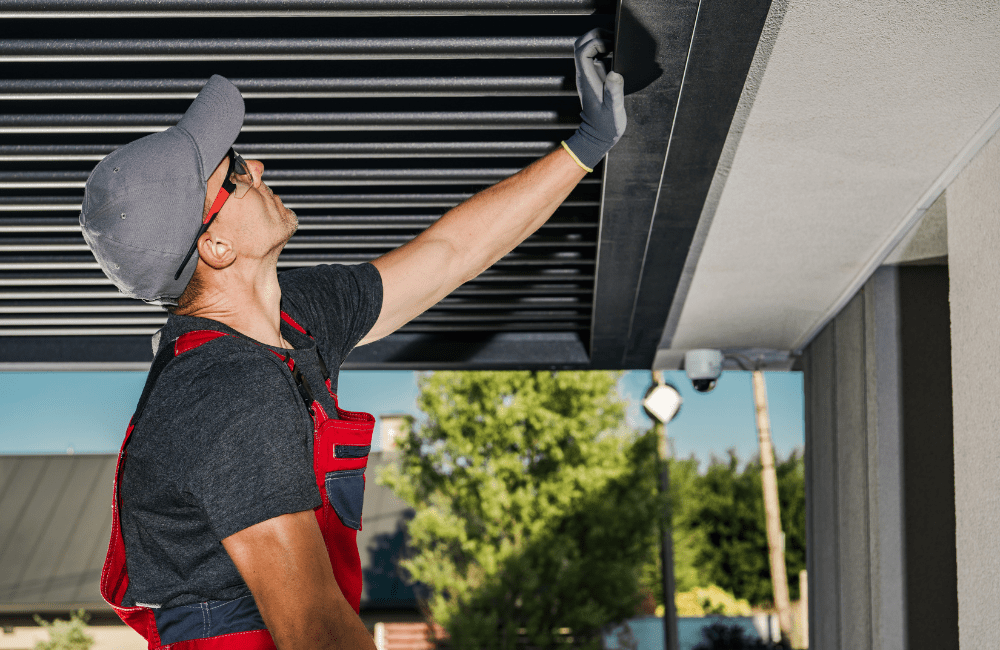
3. Allow for Door Clearance and Window Height
Awning placement must leave enough space above doors to avoid blocking movement or signage. Height also affects visibility from the street—too low, and it obstructs the view; too high, and it loses shading impact. A site visit from Connecticut awning experts can help find that sweet spot for clearance and coverage.
4. Consider Building Codes and Sidewalk Regulations
In many Connecticut towns, there are restrictions on how far an awning can extend over public sidewalks or hang above certain heights. Failing to follow these rules could lead to fines or forced removal. Connecticut awning experts stay up to date on local regulations and can help ensure compliance during sizing.
5. Think About Multiple Awnings for Larger Storefronts
Longer buildings may benefit from a series of smaller awnings rather than one large unit. This approach creates visual interest while dividing the weight load and allowing flexibility in repairs or replacements. Connecticut awning experts often recommend modular layouts for large retail spaces or multi-tenant buildings.
6. Plan for Future Signage or Lighting
When an awning includes signage or lighting, the size must accommodate those elements without looking cluttered. A deeper projection or taller front panel may be needed to fit logos or downlights. Connecticut awning experts can factor these additions into the measurements before finalizing the layout.
Maintaining Commercial Awnings Year-Round
Window awnings can reduce solar heat gain in the summer by up to 65% on south-facing windows, making them a practical energy-saving feature for many buildings. With this in mind, it’s only crucial to treat awnings with regular care.
Seasonal maintenance keeps fabrics looking sharp, frames secure, and moving parts functional. Retailers who follow a consistent upkeep routine—often with help from Connecticut awning experts—can avoid costly repairs and extend the life of their investment.
1. Inspect for Seasonal Wear and Tear
Each season brings different challenges, from high winds in the fall to heavy snow in the winter. Retailers should inspect their awnings at least four times a year, checking for signs of fabric sagging, rusted hardware, or bent supports. Connecticut awning experts can perform deeper inspections if damage or stress points are found.
2. Clean Fabric Regularly with the Right Products
Dust, bird droppings, and pollution can quickly dull the look of a commercial awning. Using mild soap, warm water, and a soft brush every few months helps maintain appearance and prevents buildup that can lead to mildew. Connecticut awning experts advise against using bleach or pressure washers, which can degrade fabric coatings.
3. Tighten Bolts and Check Frame Connections
Over time, fasteners can loosen due to vibration, wind movement, or structural shifting. Retailers should inspect all bolts, brackets, and mounting plates and tighten anything that seems loose. Connecticut awning experts often include this step in their maintenance services to ensure safety and structural integrity.
4. Remove Snow and Debris Promptly
Snow and fallen branches can place excess weight on awnings, especially flat or low-sloped styles. Using a soft broom or long-handled brush helps clear the load without damaging the fabric. Connecticut awning experts recommend acting quickly after snowstorms to prevent stretching or bending.
5. Lubricate Moving Parts on Retractable Models
For retractable awnings, joints and arms should be lubricated at least twice a year to prevent sticking or grinding. A silicone-based spray keeps the parts moving smoothly without attracting dirt. Connecticut awning experts can recommend the best products based on the awning’s design and manufacturer.
6. Schedule a Professional Tune-Up Annually
Even with regular DIY maintenance, a yearly visit from a pro ensures nothing gets overlooked. Connecticut awning experts can spot early signs of fabric fatigue, tension issues, or hardware corrosion and make minor repairs on the spot. This small investment often prevents bigger, more expensive problems down the line.
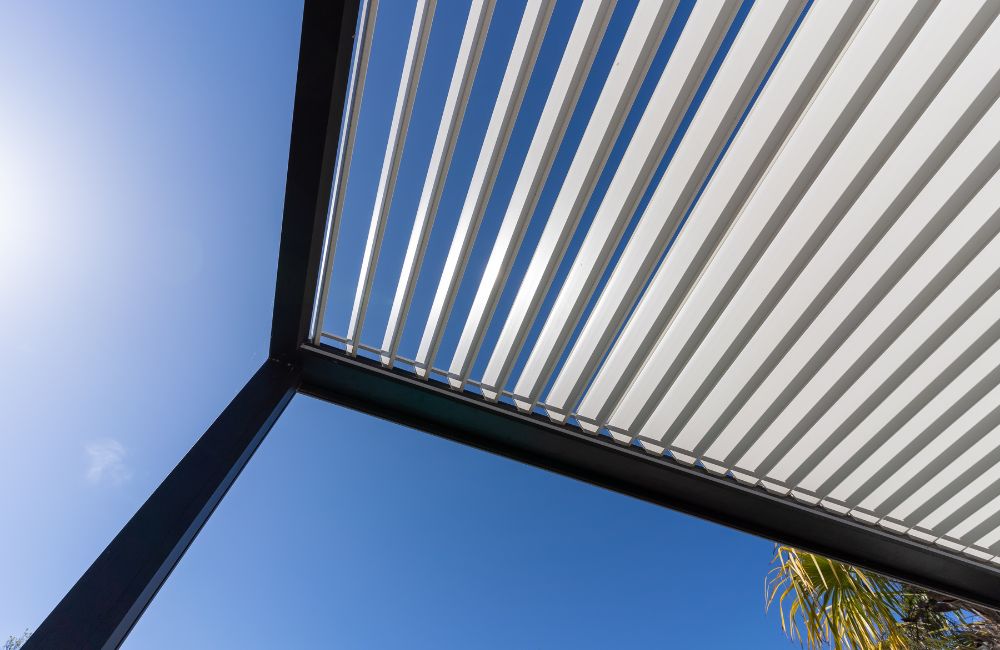
Frequently Asked Questions (FAQs)
Yes, a high-quality commercial awning can boost a property’s curb appeal and contribute to long-term value. It creates a more inviting storefront and adds functional improvements like energy efficiency and customer comfort. Connecticut awning experts often work with property owners who want to attract tenants or raise resale value through upgraded exterior features.
Many commercial awnings are available in fabrics treated with fire-retardant coatings to meet local safety codes. These materials are especially important for stores in multi-unit buildings, shopping plazas, or areas with strict compliance requirements. Connecticut awning experts can help select certified fire-rated options that still offer design flexibility.
In some cases, insurance providers offer favorable rates for businesses with awnings that reduce sun exposure or provide weather protection. However, the awning must meet certain safety and structural standards. Connecticut awning experts can provide documentation on wind ratings, materials, and installation that may support insurance claims or policy adjustments.
Yes, but special guidelines often apply when installing awnings on historically designated properties. Materials, colors, and mounting techniques may need to meet preservation standards or gain approval from local boards. Connecticut awning experts frequently assist with custom designs that honor historic architecture while adding modern functionality.
Absolutely—many retailers replace outdated awnings with updated styles or stronger materials without changing the overall storefront structure. A retrofit allows businesses to refresh their image and improve performance without major renovations. Connecticut awning experts can assess existing mounts, measure for fit, and recommend a seamless upgrade.
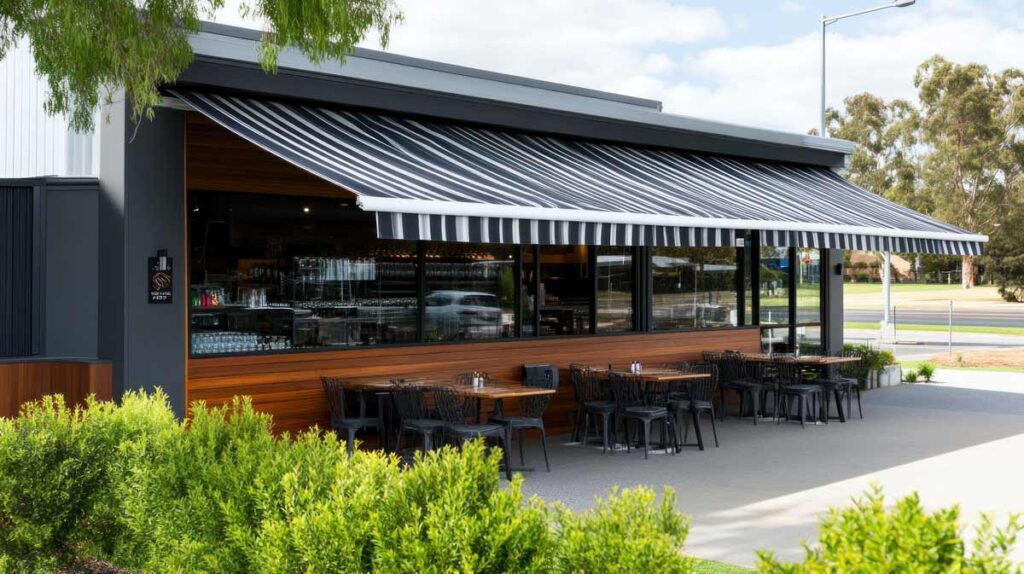
Make a Bold First Impression with Durkin’s Awnings
Durkin’s helps Connecticut retailers stand out with commercial awnings built for both impact and endurance. Whether it’s shielding entryways from weather or turning foot traffic into loyal customers, every awning is designed to serve a purpose—and look good doing it! With decades of hands-on experience, Durkin’s delivers personalized service, precise installations, and results that last.
Partner with the Connecticut awning experts trusted by businesses across the state. Contact us today!



